As you may know, I am working on my King´s Cruiser 33 refit program since last October now and have made plenty of progress, yet had to experience some setbacks as well. Nevertheless, despite my own steps in refurbishing my sailing yacht it´s always a pleasure to talk to people who have completely finished their refit to participate from their experience, their view on certain details and get an impression of what I´ve maybe still up to encounter in my own struggle to get SY OLIVIA back into the water again. I was especially excited to talk to Nina of SY ZIRKON on their refit-program lately – what an impressive story!
„It was Love at first Sight.“
Nina and her (now husband) Hanno are at their early 30ies and a couple for several years now. Hanno is sailing since he was a little child, his father did introduce him to the element water and the wonders of the seas, a fascination still driving him. Nina got infected by the sailing-virus as soon as they fell in love with each other and as she was putting it: “It was clear from the beginning on that we are bound for a circumnavigation one day as travelling the world is a dream of my own since I can think – having Hanno and his love for sailing boats in my life it was a no brainer that this project could be accomplished with a sailing yacht. So yeah, we didn´t had to discuss whether to buy or not to buy a yacht very much then.”
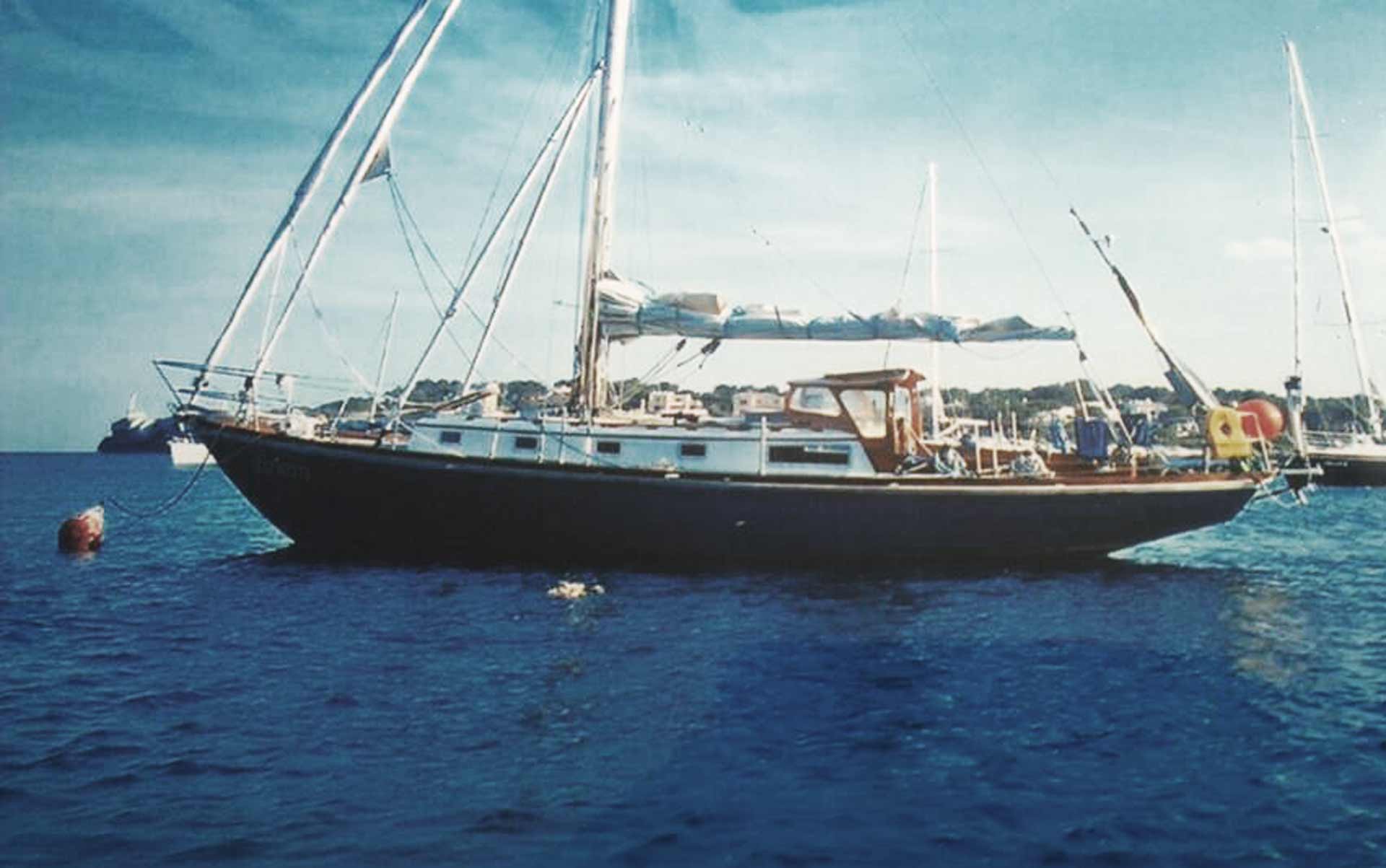
As the saying goes, the ship finds its owner, not the other way round. And that is how SY ZIRKON got into the lives of the two: “Hanno´s father called up and said that there was a yacht which could be of interest available in Mallorca. So no 24 hours later Hanno boarded a plane and took a look at her. When he arrived, my phone rang and he said – this is her! – and that´s how we got her. It was love at first sight I guess.” The two were looking for a classic sailing yacht with a beautiful drawing and the Dutch built Frans Maas “Breeon”-Type Sloop was exactly what they were looking for all the time.
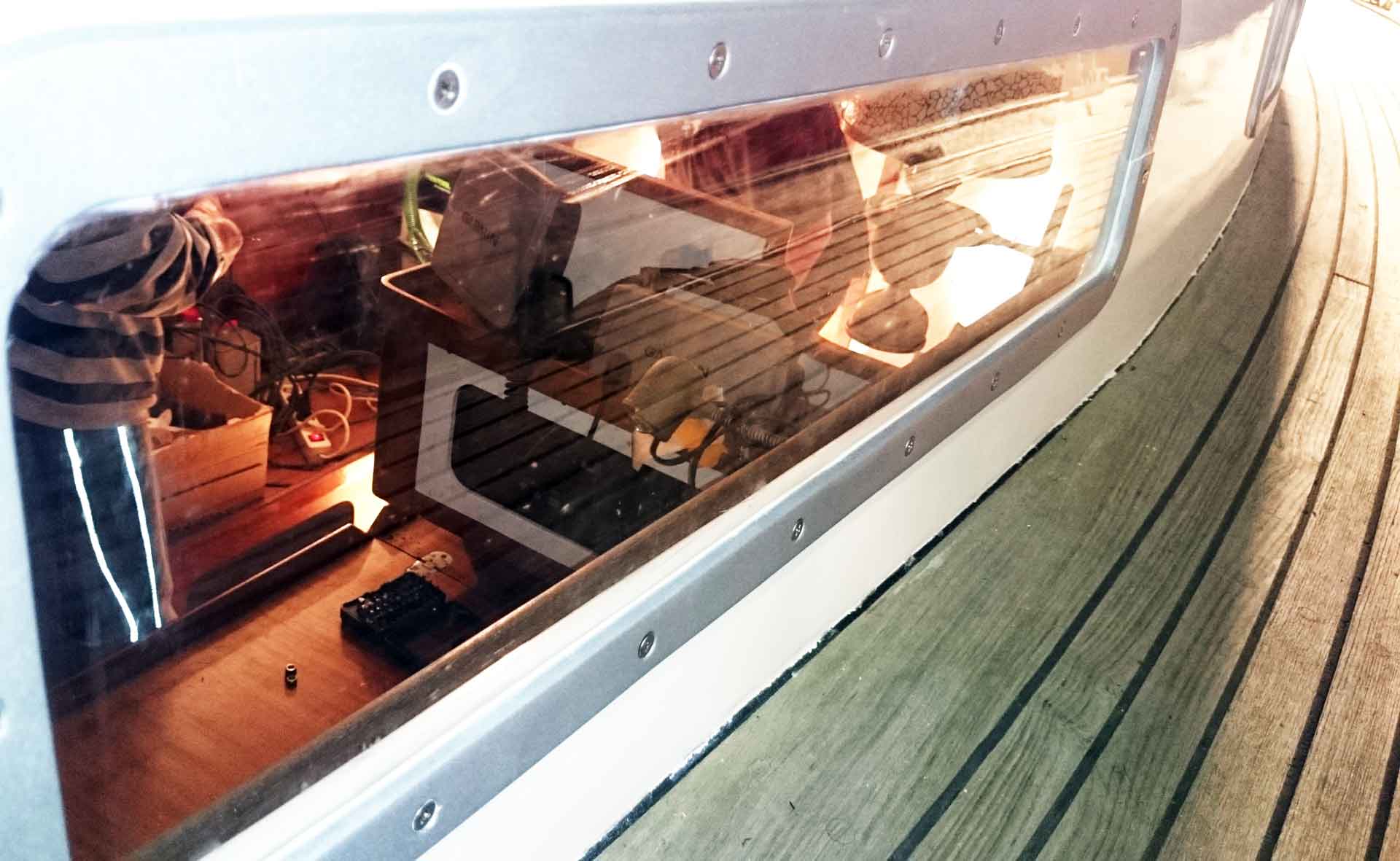
This 37 feet sailing yacht had “a considerable width and was flat at the freeboard, beautifully composed” and as she was built in 1967 as one of the first GRP-yachts ever there was plenty of material: The thick, sturdy hull was built in Amsterdam. “Now or never!, we thought and it took no more than a few days to have the contract of purchase signed and she was ours.” Nina tells the story with such enthusiasm, it´s a pleasure to watch her talking – truly loving her ship and everything connected to it.
„My Husband is a Refit-a-holic.“
I have to smile when Nina is answering my question whether it was clear from the beginning, what a refit would mean to the two: “Well, she is an old lady and next year she will turn 50 years. It was absolutely no question if we would have to refurbish her: Yes, of course!” But they didn´t fear the coming, since Hanno has a lot of experience in refitting boats: Father and Hanno did refurbish a Contest 33, after this he went on to work on two follow-up projects and thus knew exactly what to do.
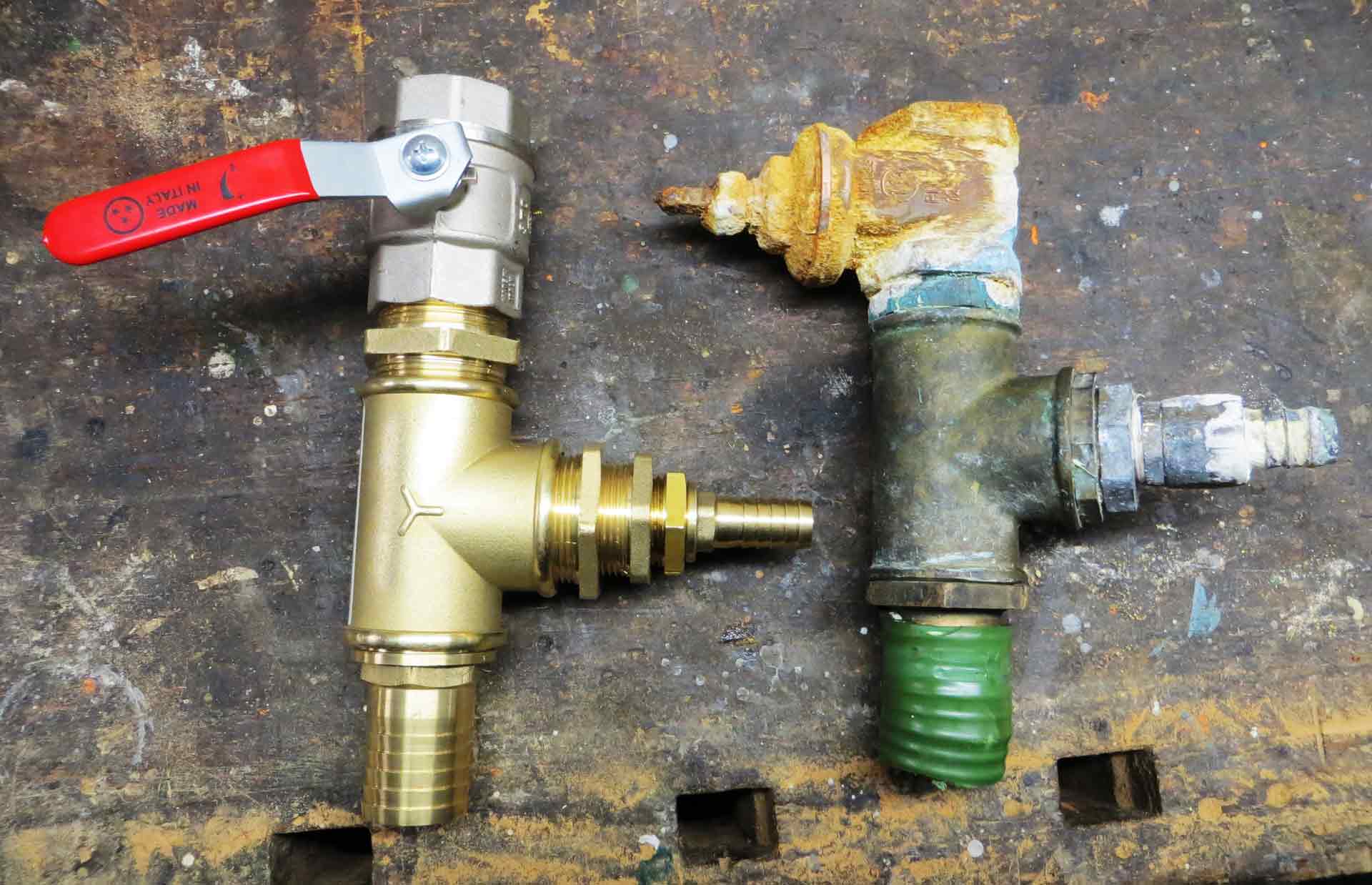
“My husband is kind of a refit-a-holic I should say. Our yacht was a big lucky-bag. Although the pre-owner was very cooperative, didn´t hide anything or tried to sell something better than it was the boat was still a bit of unknown territory for us, so, with a refit program of a sailing yacht you never really know exactly what will come in the end, I would guess.” But as Nina adds: “In the end I must say we had prepared ourselves for a far worse state of the ship.”
“Sailing the Yacht to the Netherlands was a big Adventure.”
Before the two could start their work they had to bring the ship to the vicinity of their home town of Cologne: To a Dutch harbor which would only be a two hour drive to work then. Bringing a 50 year old used ship without any experience with the boat a couple of hundred miles through the notorious Bay of Biscay and the Channel back home was a tantalizing task at first: “It was happening so fast. We first thought of having her transported by truck overland, but the hauling was so expensive that we refrained from doing so”, Nina tells me: “How would the structural integrity of the ship be? We´ve had no clue of her substance anyway and on the other hand we knew that her engine was kind of worn out.”
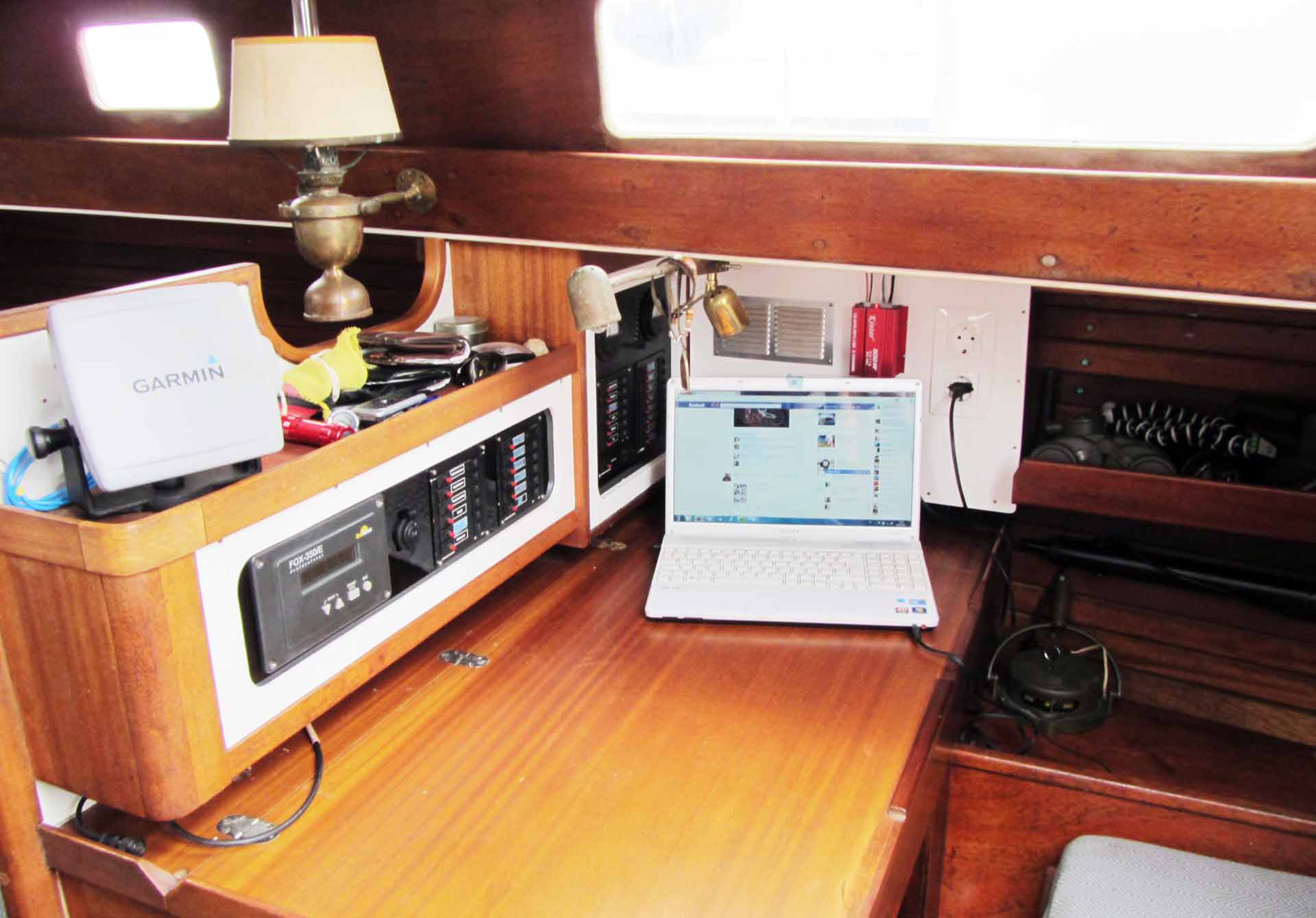
Nevertheless the couple decides to take the risk and sail SY ZIRKON to the Netherlands. “But we planned to do it in stages: First would be done by Hanno and his father, the second with friends and I would be on the last leg to accompany Hanno, who has a lot of sailing experience and was pretty sure of himself and the boat of being capable to finish the voyage.” In doing so, they two completed the first refit-task: Electronics and Safety. “We added a modern DSC-controller and VHF-radio with AIS-transceiver, an active Radar-reflector and a state-of-the-art plotter for navigation.”, she says, laughing ironically: “So that we would at least be able to send a proper S-O-S …”. They sailed but as it would have been expected, the engine began to fail regularly north of Porto/Portugal and they had to mothball the boat over Winter and bring her back the next year. Arriving in the Netherlands, the real refit could begin: Getting a brand new engine was the first thing to be done: “It is a good feeling to have a reliable engine. But I must admit, as soon as our old Frankenstein was hauled out of the hull our hearts became sore … a bit.”
„Everything was inside his Head.“
This was the first lesson in yacht refit I had to learn: You are noting without a plan – A plan will last only up the point of starting the work. How did the two plan their refit? “Well, to be honest, we didn´t made huge plans or stuff like this. It was all more or less inside Hanno´s head. He seemed to know fantastically well what to do when and how.” Hanno is kind of a genius in this sense, she says and still today wonders how he was able to memorize all the numbers, measurements and technical stuff connected with the ship: “The structure and timing, all the steps and milestones were in his brain.”
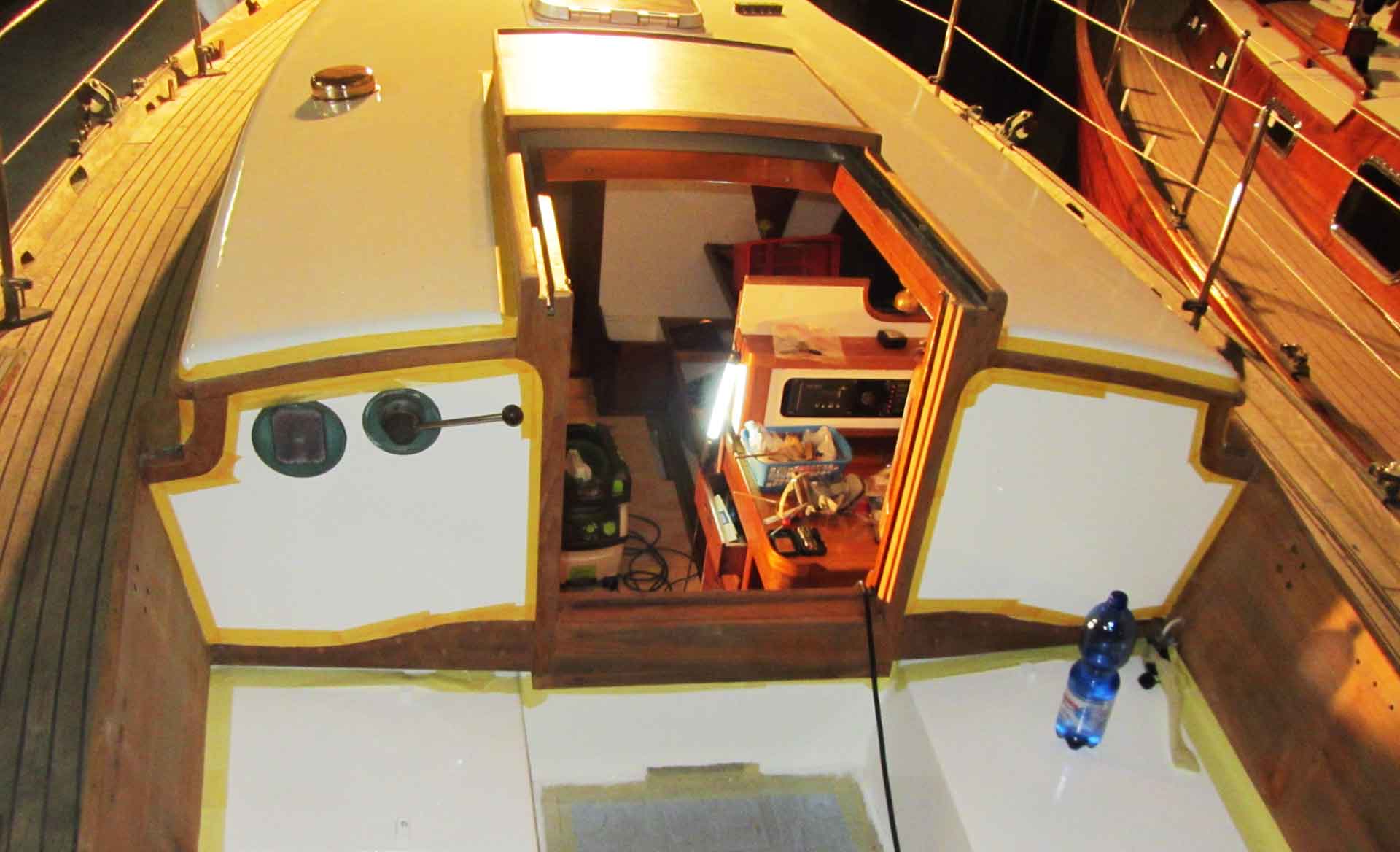
Of course, starting to work Hanno and Nina tried to have everything prepared properly: With Excel on their Laptop. “We´ve made a list, adding item of item and tried to prioritize them. Later we skipped that method because it was inefficient for us.” She remembers sitting in front of the computer and trying to thing the next steps through, constantly changing the list, which became a thing of a time-eater for them: “It made no sense to us in the end because when we crossed off one item three more appeared. Planning was impossible so the list became obsolete.” I know what she´s talking about – I do plan my own refit with an Excel-Sheet. Well, I try to … With Nina and Hanno more and more proceeding their refitting work it was primarily the weather responsible for sudden changes: “As we had our Yacht standing in an outside area for the first weeks we were very dependent on temperatures and precipitation. Starting our refit in Winter, heavy snowfalls could postpone a task, demanding fast changes of work. Planning ahead was thus an impossible thing.” But they soon found out that a different kind of written aid was far more effective.
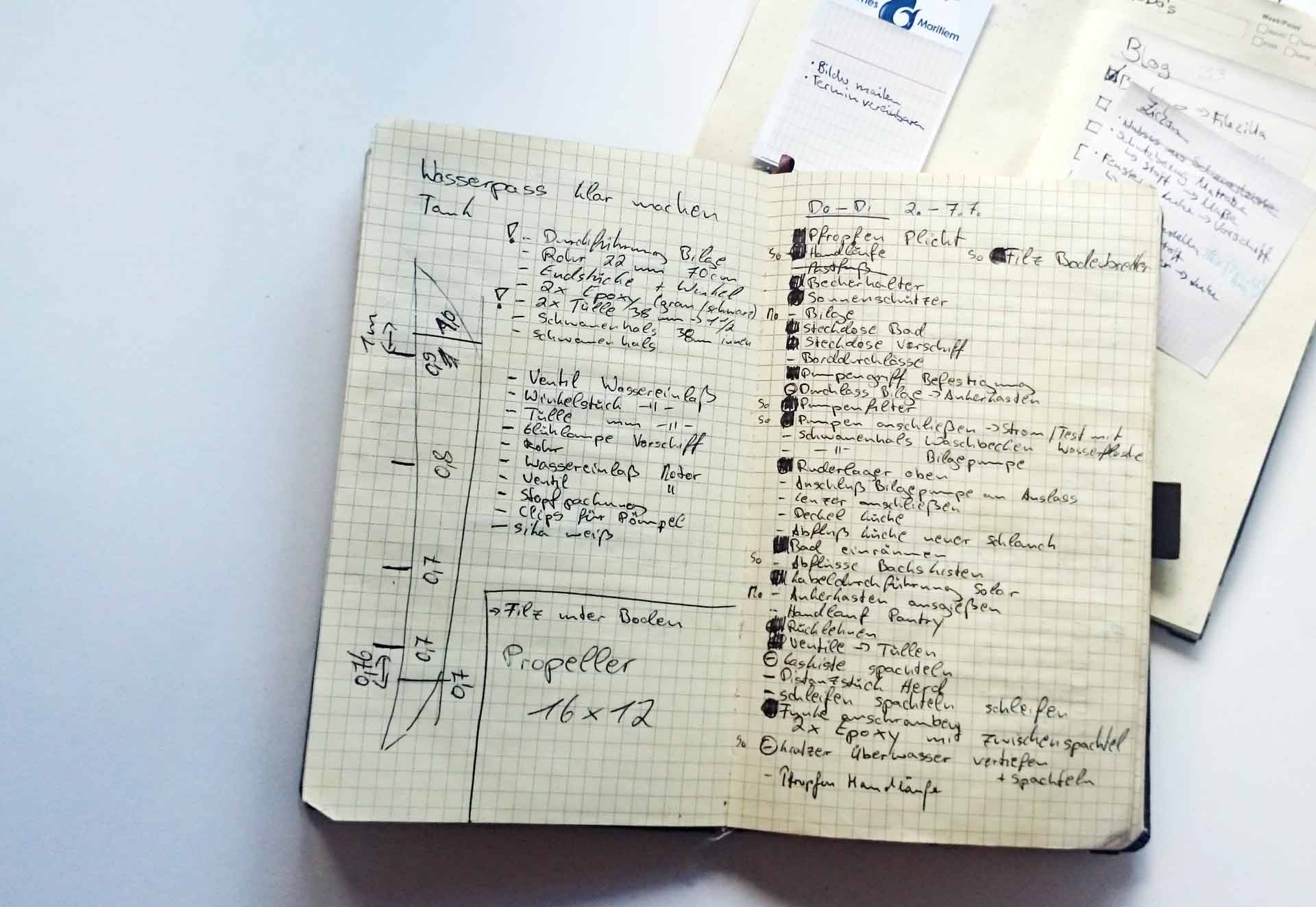
Skipping Excel-sheets for pencil and paper-notebooks: “This is what we call a Boatbook. We do have a handful of them.” Nina shows me a paper made notebook full of handwritten stuff: “What turned out to be very helpful for us have been handwritten to do-lists. Just plain and simple: What steps to be done and when – mostly planned for just one single day or weekend ahead.”, Nina says. “We used to make a list which items to buy when going for another weekend to the boat.” Then they tried to work their ways through the list.
“12 Months of Hard Work.”
A yacht´s refit is a very time consuming task. Having SY ZIRKON -nearly- finished took just more than a complete year. How did they manage to do that? I am asking because I do only find time during the weekends and when taking precious days off: “Well, Lars, to be honest, the way you are doing it wouldn´t have been a choice for us. We opted for the faster way.” Hanno being a freelancer was able to have his working time structured as he wanted it – after working for ten days he would set off for the Netherlands to work for 20 more days at the boat. “I would then join him at the weekends trying to help him as much as I could”, says Nina, “But for the most part the refit was done mainly by himself.”
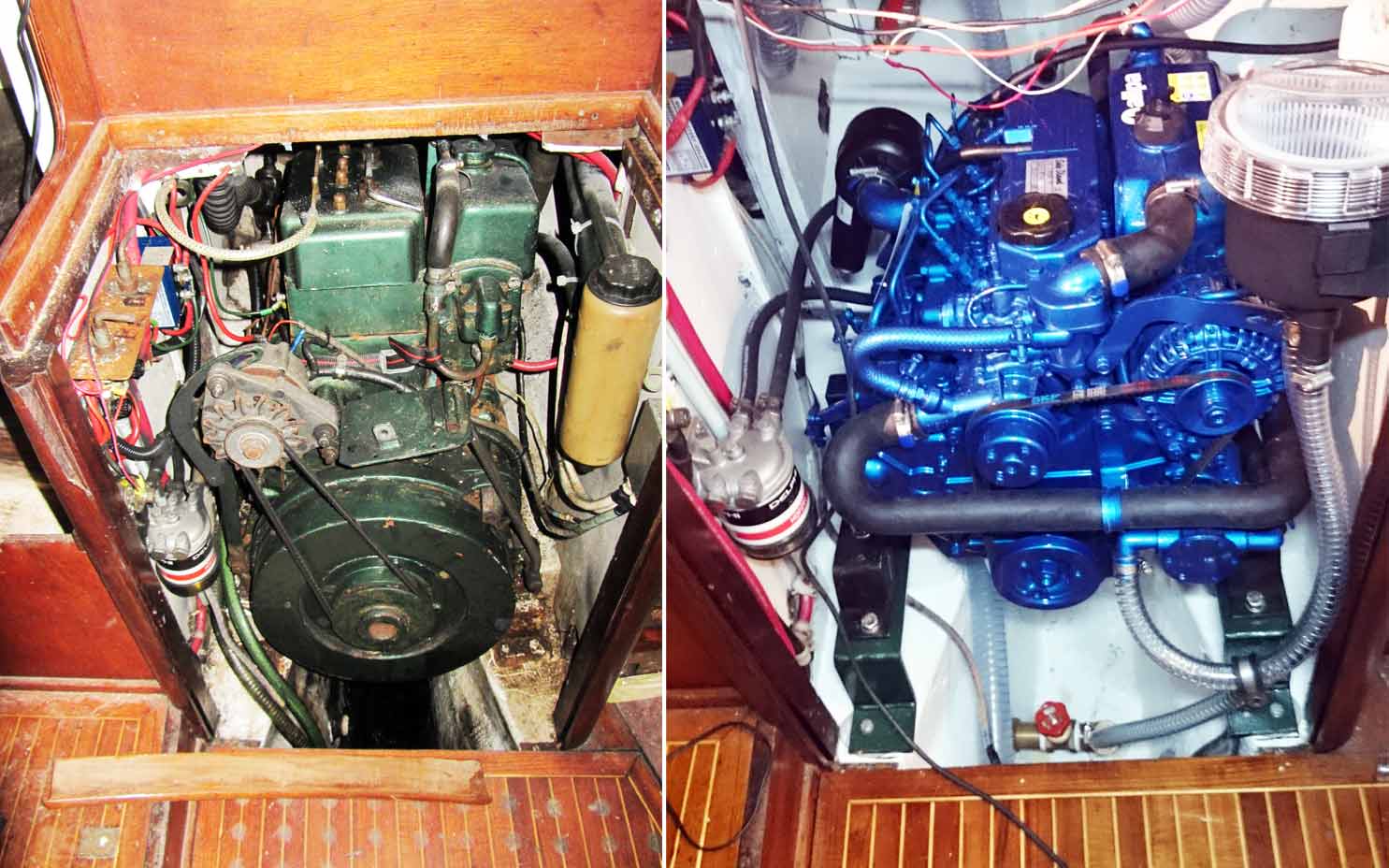
The couple borrowed a trailer from a friend to be able to live next to their boat: “That was the hardest thing – we were allowed to camp on site but the harbor master placed us well between the glass recycling bins. What a horrific thing: 6 a.m. and people were smashing their wine bottles next to our trailer …” It have been tough times, Nina remembers: “We hardly got to see each other apart from the project. Everything was subordinated to the project, rarely having some real spare time to relax and let go.” If this had affected the relationship between the two, I want to know: “Well, not really. I know that many couples suffer, not the least some relationships get to break up under the load of such a project, but not so with us. We knew what would happen, had talked through everything so, yeah, that was fine.” Nina says she just hoped they would finish work in one year: “Three, four or more years of endless work at the boat, that was no perspective for me at all!”
“We opted for a modern Touch to that classy Yacht.”
There was no real paradigm to which they re-designed their boat, Nina confessed. Other than me: I am constantly looking for inspiration (just like on the Hanseboot-fair or inside a Hallberg-Rassy dream yacht) the couple was up to “having our boat styled the way we would feel comfortable with her.”, Nina says. “We wanted to preserve the character of the Breeon-type vessel on the one hand but to add a little more comfort and modernity as well.” But having a TFT-screen was no option at all.
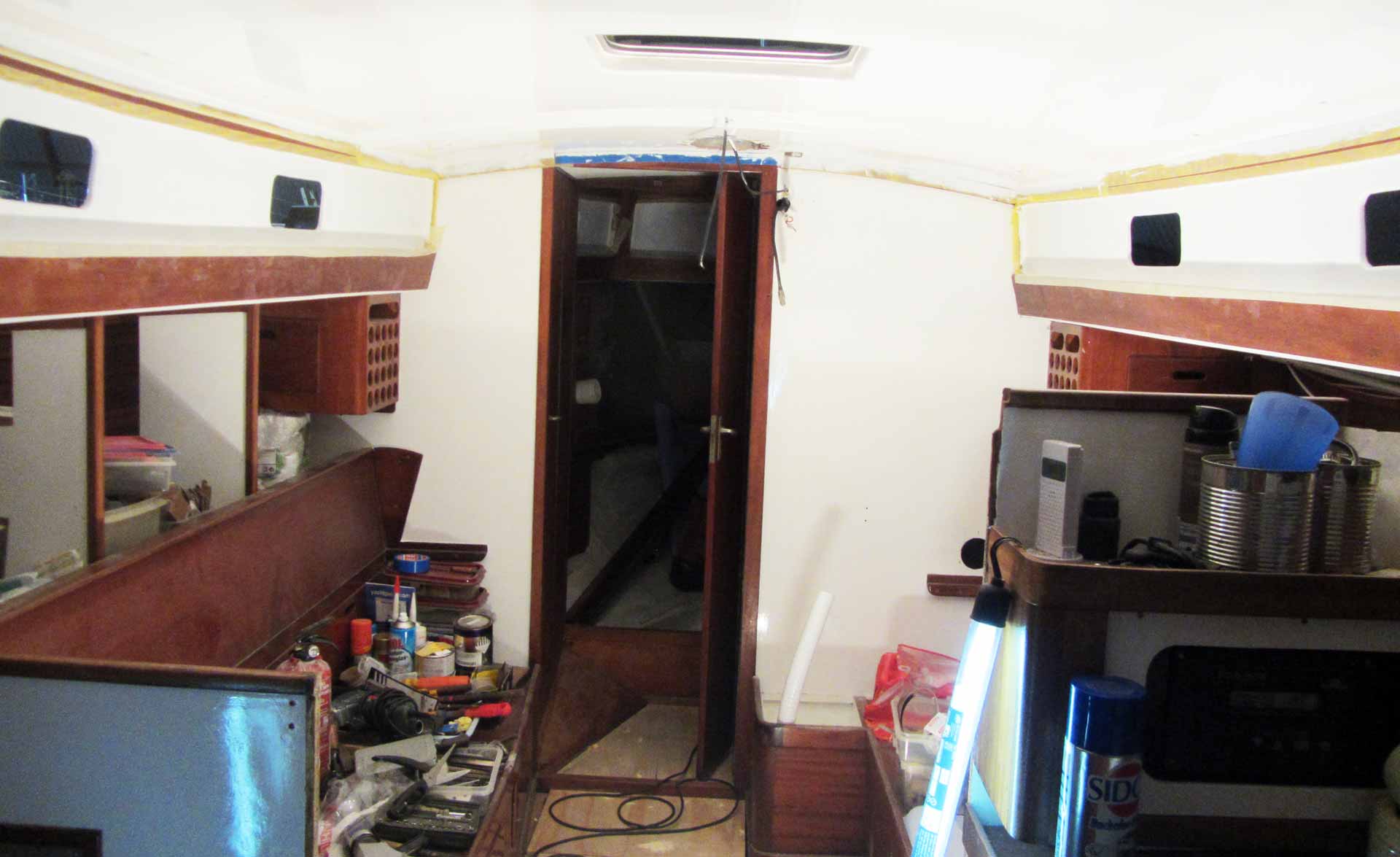
Installing a brand new engine, change the old gas-installation for a new one and the whole electric circuits was a matter of course: “It was just a question of safety. Having LED-lights as well was work partially begun by the previous owner and adding a very nice stone-look pantry worktop made of Farmica was a wish of myself, even though some people might find it odd in a ship.”
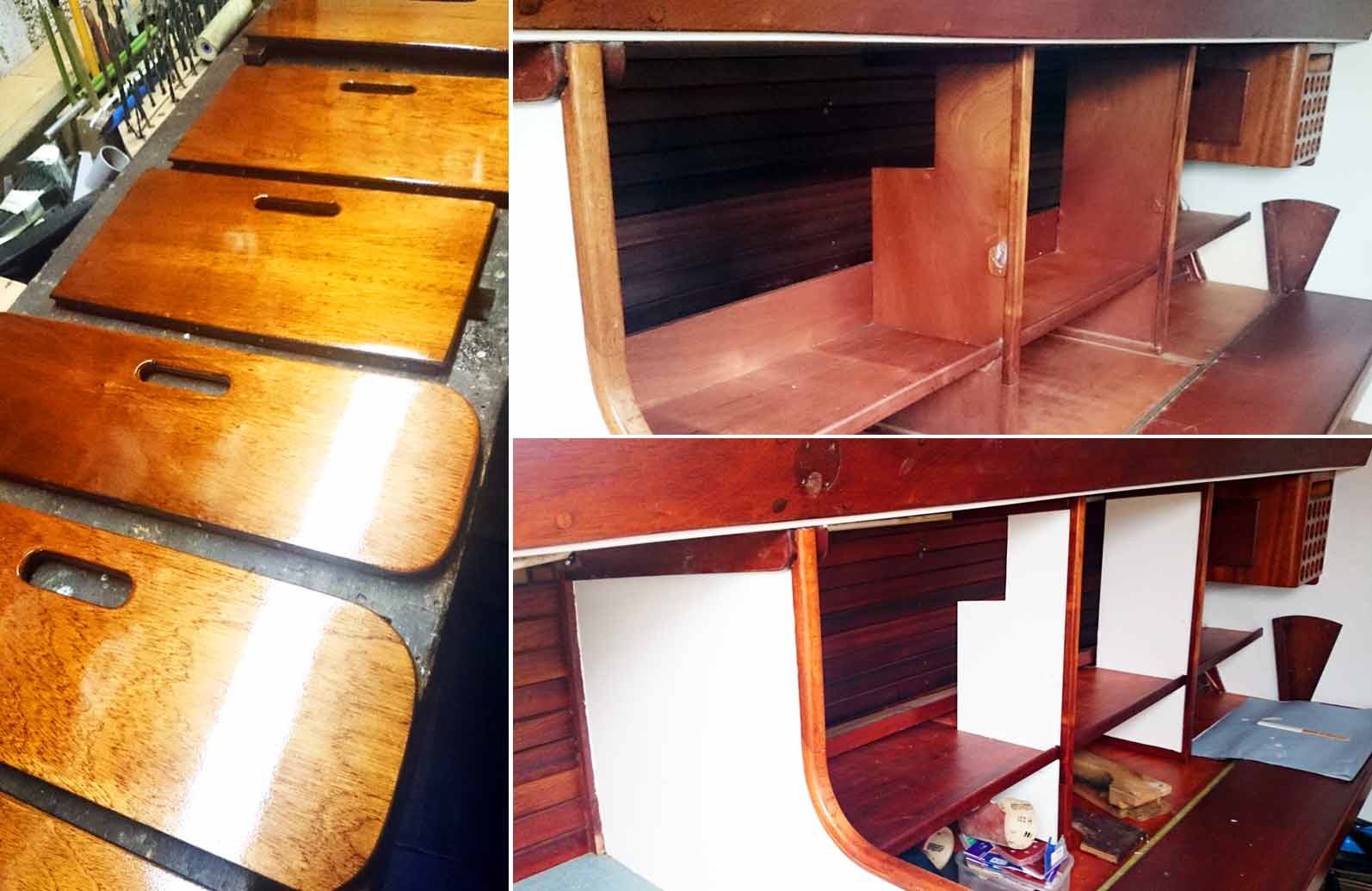
ZIRKONs saloon features a lot of Mahagony. That was those times back then. Dark wood. Too dark for the two: “We wanted to have a lighter, more friendly appearance of the interior space so we partially painted the wood in white which really adds up – we feel a lot more comfortable now sitting below deck.” Nina says it´s a nice mix of the classy look of the good old times and some modern elements: “It´s our dream yacht and we are perfectly fine with it: Especially the new oven contributes to a very cozy feeling here.”
The Milestones of the Yacht Refit
I am very interested in how they did structure the refit and which milestones have been accomplished in which order. “Well, as I mentioned, we started with the interior refit, just as you are doing due to the fact that we began work in late Autumn and Winter.”, Nina begins: “After emptying the boat we have been sanding and painting all wooden panels, parts and stuff. We did do it at home in Cologne where we had prepared a room in the basement and garage of my parents-in-law with a heater to get a warm and dry atmosphere.” Sitting on the couch and polishing the brass instruments whilst having a good DVD in the player. Then the yacht was brought into a hall where work went on. During that time all of the electrical wiring has been renewed and we had our gas-installation checked by a professional expert.” A lot of time has been invested by ZIRKONs crew into refurbishing the pantry, the part of the whole project of which Nina seems to take most proud in. It was also the help of many friends and their families as well the two are very thankful of: Without an occasional BBQ at the yard with free beer drawing attention of their friends some of the work wouldn´t have been finished.
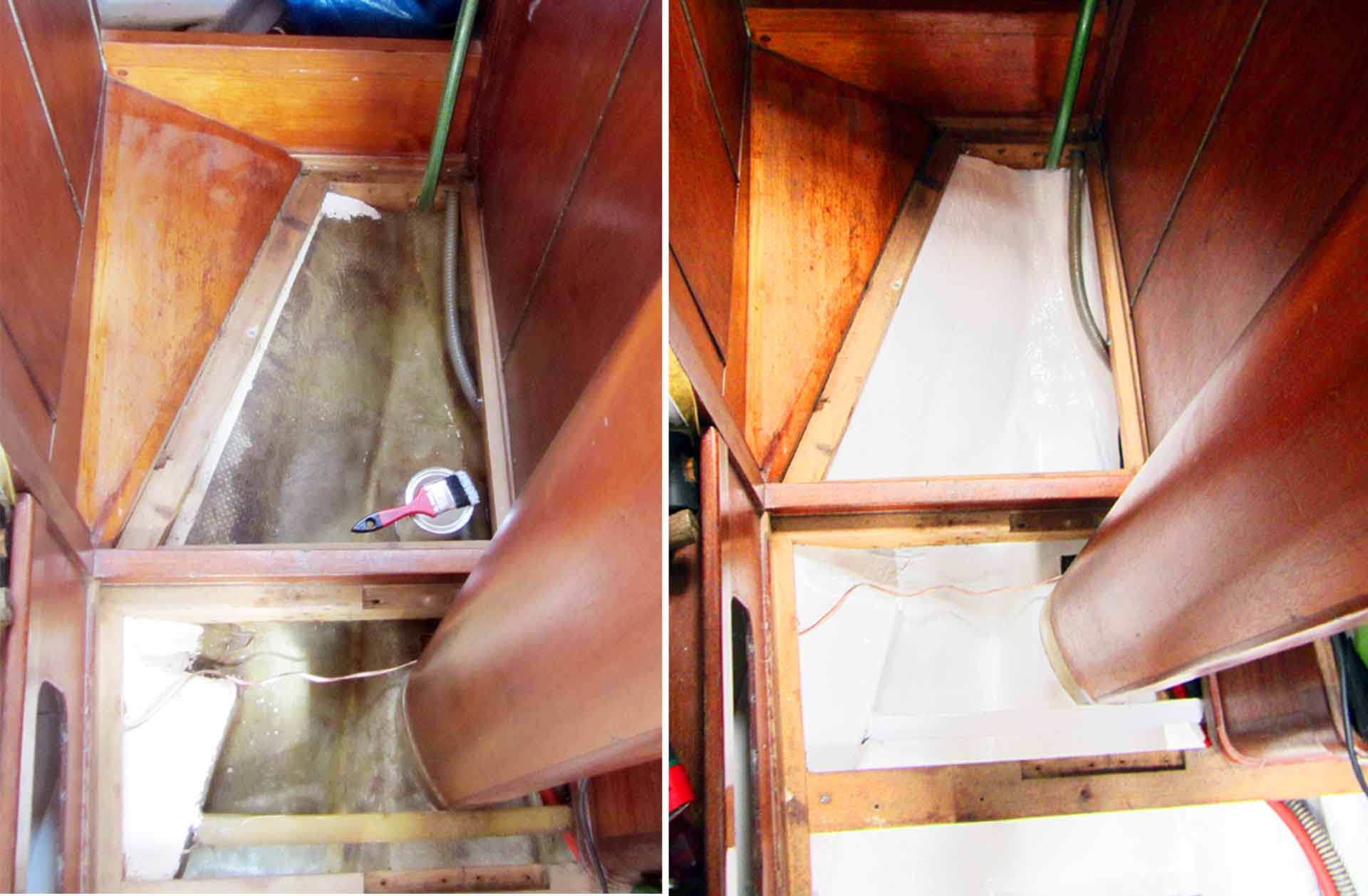
“After this, having Spring and early Summer again, we refurbished the engine room and the engine basement at first, came down to the filthy bilge and had a struggle to get the main fresh water tank clean.” This tank is laminated into the hull making it very hard to having if refitted. “Then it was Summer at last, it got warmer and we proceeded to have the interior finished and consecrated ourselves to the varnishing of the deck of ZIRKON. First and last step was finally getting the whole hull stripped of every single layer of paint and antifouling and re-working it properly first with Epoxy and antifouling again. As we had the reasonable suspicion of Osmosis that was a necessary step, yet we have been lucky to find just a handful of small spots with Osmosis.”
“Oh, yeah, we indeed found a Secret Drawer …”
When I was beginning my work on SY OLIVIA the first step of the whole refit program was to completely empty the boat (here´s an article on that one) Nina has her very own memories to this stage of the refit: “We found tons of old papers, charts and even pictures, which was very interesting: 50 years ship´s life is a rich collection of stories.” For example, ZIRKON had passed through the Suez Canal, a thing rarely done by sailing yachts in our not so peaceful present times, was anchoring off Durban/South Africa and went over the Atlantic several times. “Hanno is not the person who gets involved with memories too much but I was excited to roam through old issues of the 1970ies of the Transocean Magazine.” That was way before the Internet and the hordes of the big charter fleets have been occupying the marinas around the world.
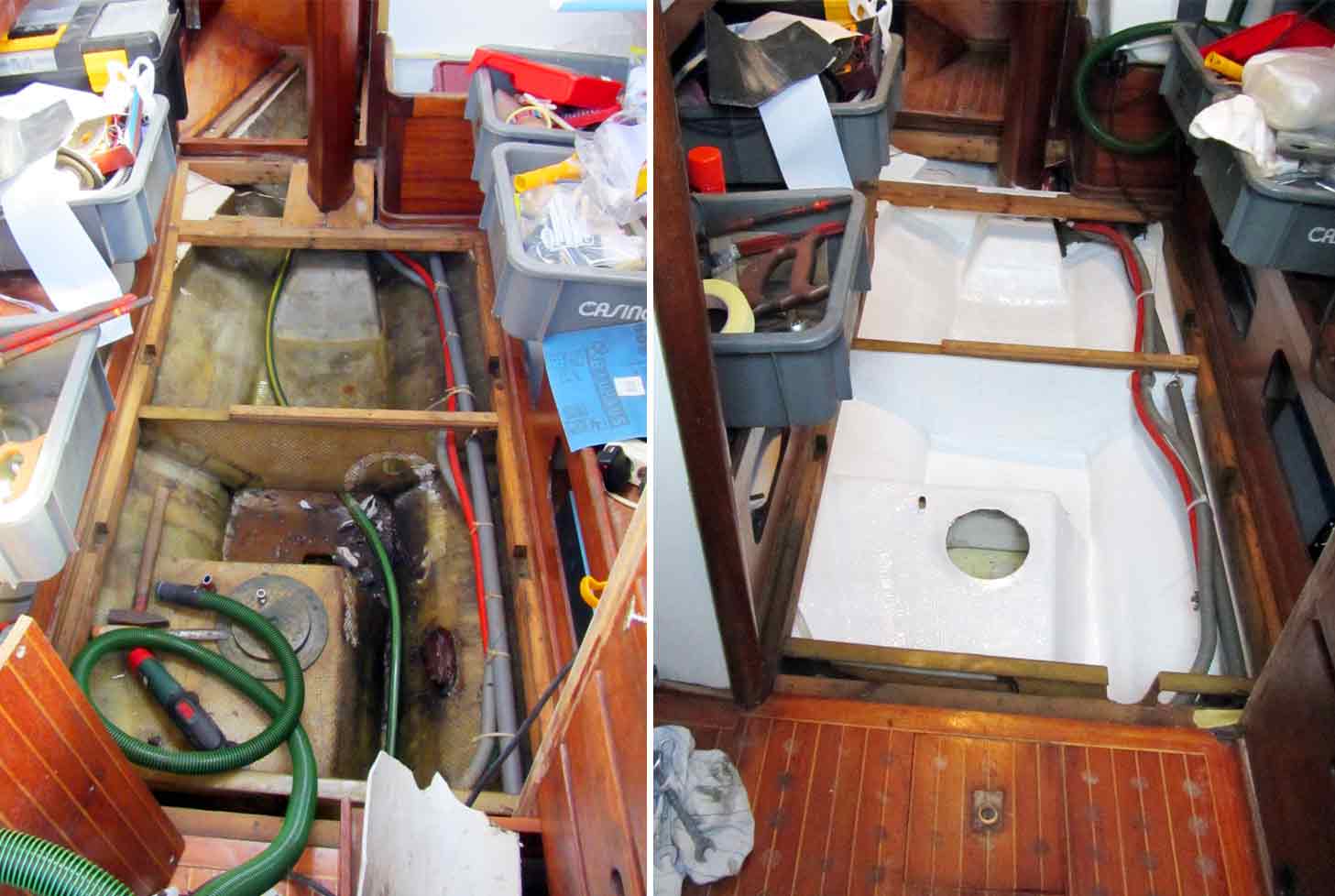
If they did find the 1.000.000 Euros behind a panel? “Oh, indeed, we did find a secret drawer. There has been no money nor bars of gold – but instead very precious spare parts for the engine which we had bought over time expensively which was a bit annoying.” The nicest thing of all, Nina says, was that there was no serious sign of Osmosis at the hull at all and – as the harbor master was reassuring the two, that the fitting of the new engine has been done within under 10 minutes right away. “We were very, very lucky with ZIRKON concerning bad surprises.” Finding just two rotten spots was among them but refurbishing was a no brainer.
“Counting the Money was skipped soon. After Excel.”
Asking Nina what in her eyes was the hardest part of the refit, she has a clear answer: “Working for a whole of 12 months, sometimes 7 days a week and spending all of our holidays to get dirty in the bilge was the hardest. This resulted in a lot of stressful situations – especially during winter when it was so hard to be motivated to work in temperatures well below zero. This double-loaded burden of working, having no spare-time and working at the boat connected to shuttle between Cologne and the Netherlands was awful indeed.” But, as she puts it: They were determined to go through hell all and at once to have the boat finished as soon as possible.
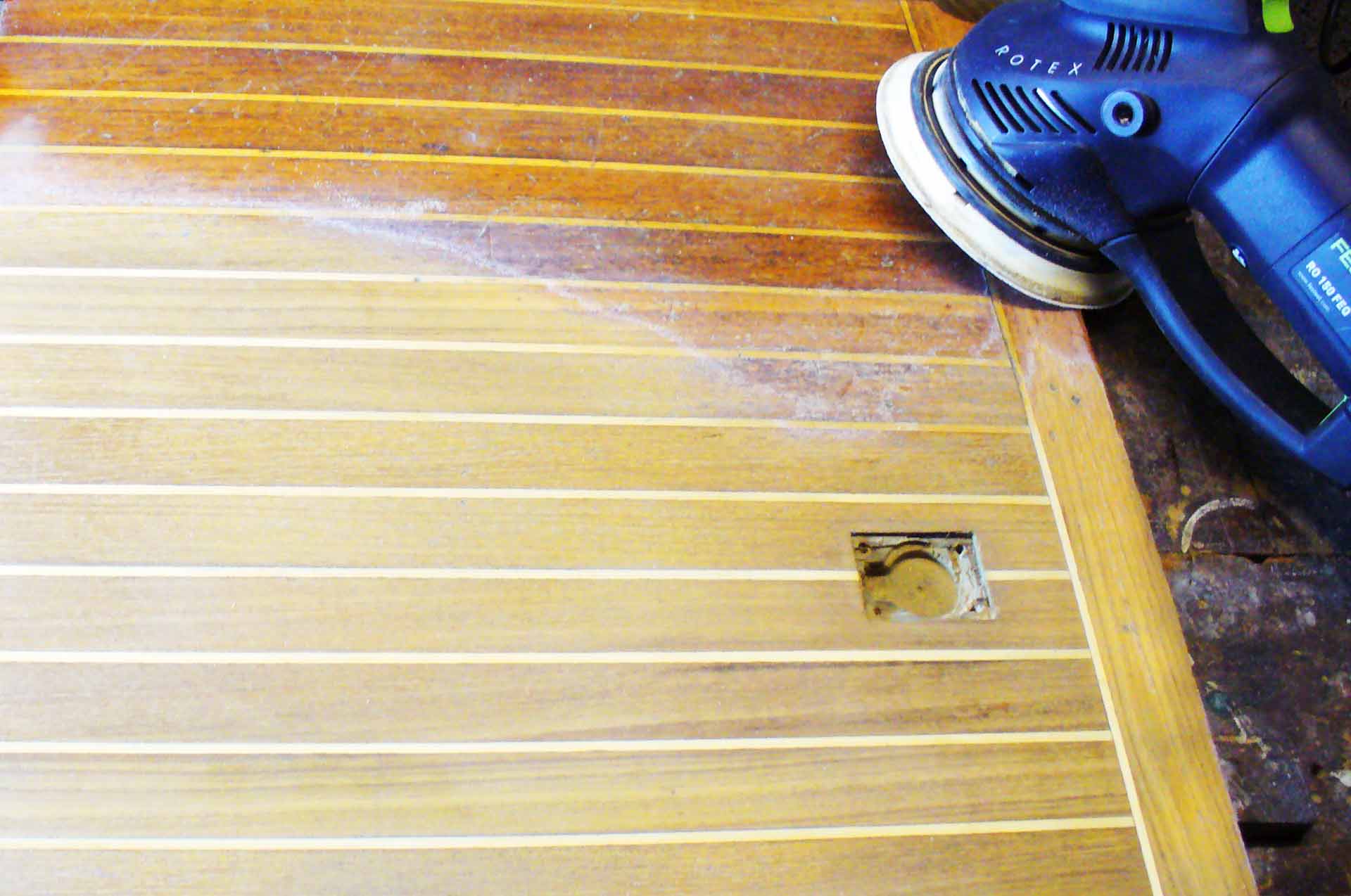
Making decisions was also a concern: “Hanno was sometimes going crazy over the question which paint to use, 1K or 2K, or other material-related questions on which certain things were dependent.” Finally, she says, hard again was to ensure that nothing was forgotten: A huge task given the fact that they didn´t had a written masterplan at all. If there were things they wouldn´t do again if they´d have to restart the project?
“Well, no”, she begins: “On the whole we can say that everything went the way we wanted it. With SY ZIRKON being refitted now we have the boat we wished for in the way we wanted her to be.” Of course, she says, only time will tell if all the decisions they´ve made proof to be right: International or Epifanes? Which sealing to take? Well, there´s one thing she would change at once: “If we were to re-start, I wouldn´t opt for having a regular job and trying to work in the spare time. I think, best for us would have been to be one year off completely to have the refit done.”

Nevertheless: “It was worth it anyway.”, Nina says: “We have our ship perfectly refitted now on a high safety standard, cozy and ready to cast off. We know the ship from the inside out which is a great plus.” Speaking of being worth it, what was the project worth in terms of money? “We skipped counting the budgets spent right after skipping Excel. It´s useless because you are to invest everything you have anyway – and you cannot spend more than you have. It just goes on everybody´s nerves and in the end – what for? To tell what budget was spent? We don´t want to sell her anyway so that´s an information nobody wants.” I agree: Although I do regularly update my Excel-sheet I don´t run a budget-counter either. But that has more to do with my wife …
“Our Top 5 Hints & Tricks for Yacht Refitters.”
Looking at their work I do feel a lot of respect: I know by myself how much struggle, effort and sweat it costs to “just” refit a sailing yacht and as they have accomplished what I can still only dream of, I ask Nina what she would regard as the Top 5 hints and tricks for newcomers in the refit-business: “Hanno and I have been thinking this through very careful and I hope our Top 5 will help refit rookies.”
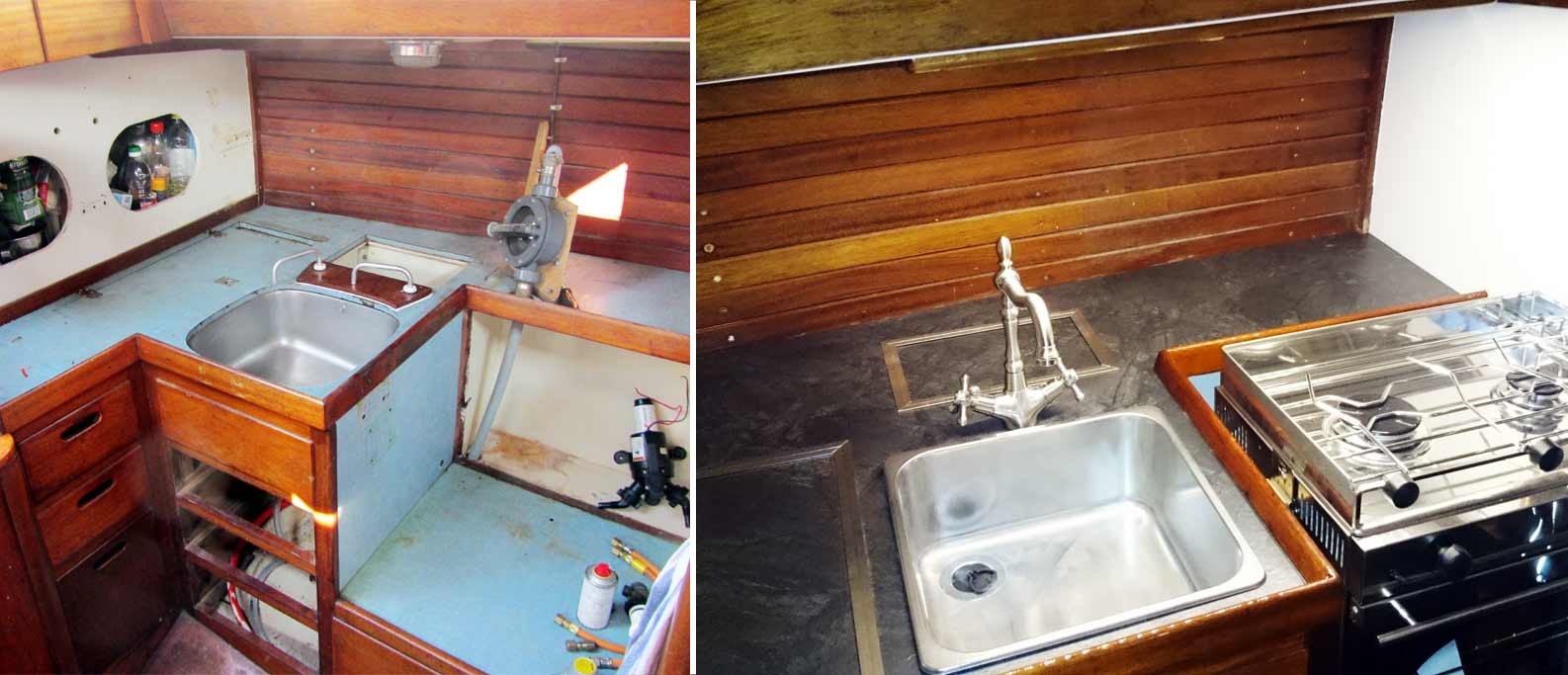
Safety at work: Breathing masks by 3M are irreplacable! Refit means a lot of hazardous dust and odors and the masks by 3M with active coal filters proved to be so efficient that the two would recommend not to do a single step without them wearing.
Having the right tools is just the beginning – having good tools is the key to success. As the two are stating, to spare a Buck on tools will result in inferior finishes when it comes to working with them. In the end, cheaply bought is bought twice.
The secret hint: Beer & steaks in the fridge is essential. Nobody would follow an invitation like: “Hey, do you want to spend a weekend with freezing cold temperatures cleaning a filthy stinking bilge and getting dirty while breathing diesel-fumes?”. Instead, offering cold beer and a fat steak from the BBQ and “let´s see if we can do something for the yacht” will draw the attention of people.
A clear cut plan: When will this project be finished? That´s the key. You have to have a guideline at least, knowing when you will finish the work. Doing a bit here and a bit there will lead to an endless chain of unfinished work. 3 years, 4 years of fiddling around? Forget it!
Last but not least: 5, the most important one – a piggybank: Everybody who will let out one of the following hackneyed sayings: “Wow, that´s really a huge project you have here!”, “How much did you pay for this bucket?” or “But it has fine lines …” will have to pay 1 Euro. If you do so, half of the budget needed will be re-financed by the saying-piggybank.
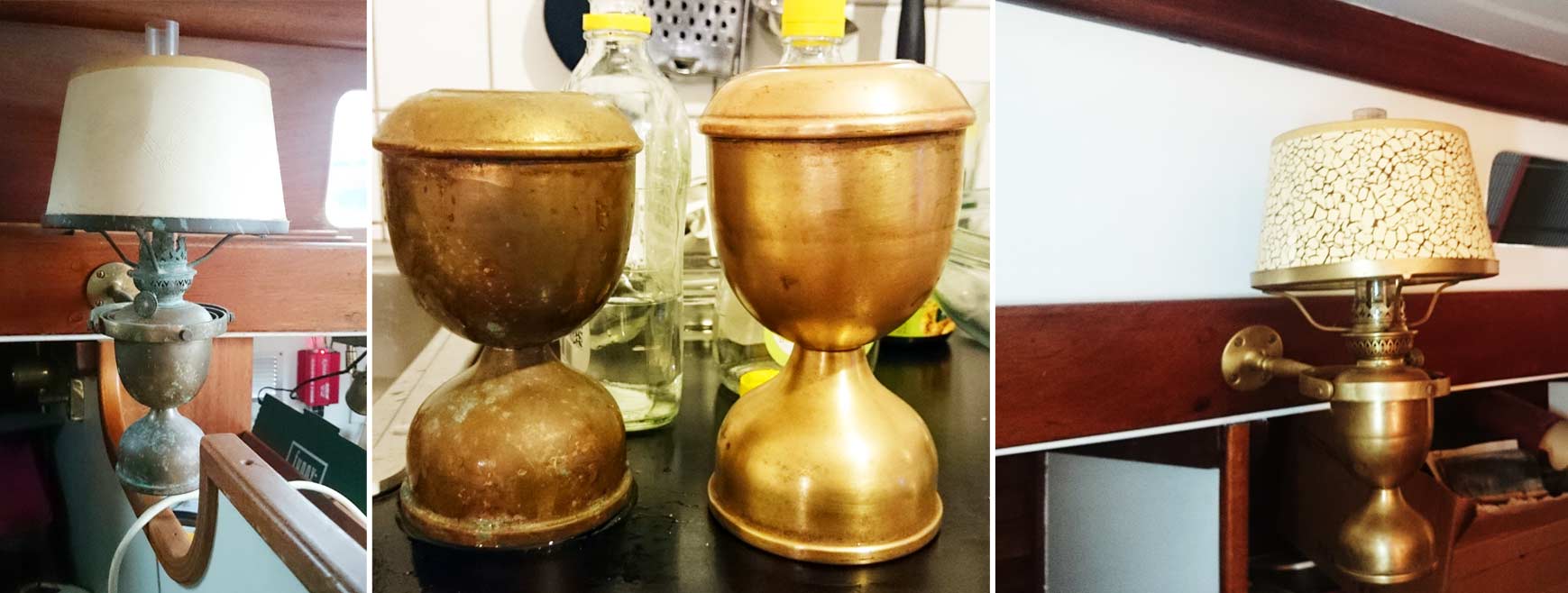
That sounds like a handful practical tips to me. Some of those are new, some daily life of my own reft program. In the end I am interested in “what comes next”? Since SY ZIRKON is ready to cast off now, is it the big roundtrip the two are heading towards?
“Well, we´ll see where to go and when.”
What the best thing of their refit was, I ask in the end. “Oh, that’s an easy one: The day we finished work and crossed off the last item from our list, we took the ship out of the hall. It was a late afternoon and the craning was set for tomorrow, so plenty of time. Instead of sleeping in our trailer, we sat down in the cockpit high above the ground. Hanno did prepare a great dinner and we had a glass of wine – next to us the sun was going down and it was just a marvelous thing.” Next day, when the SY ZIRKON was back in the water, the two had the first hot coffee made in the shiny new pantry, she describes it as the most moving moment of the whole refit.
“And of course when we´ve a nice dinner with friends at the marina when the ship was finally back in the water. That was great too: When we´ve bought the ship in Mallorca, Heinz, our pre-owner, had given us a bottle of Champaign after successfully completing the transfer-voyage. We never opened it because it didn´t seem right. The bottle itself never left the ship all through the refit. It was covered in the dust from all the grinding and sanding, had bits of paint and varnish on it and was looking kind of antique. We opened the bottle and that was it. At the finish. Finally.”
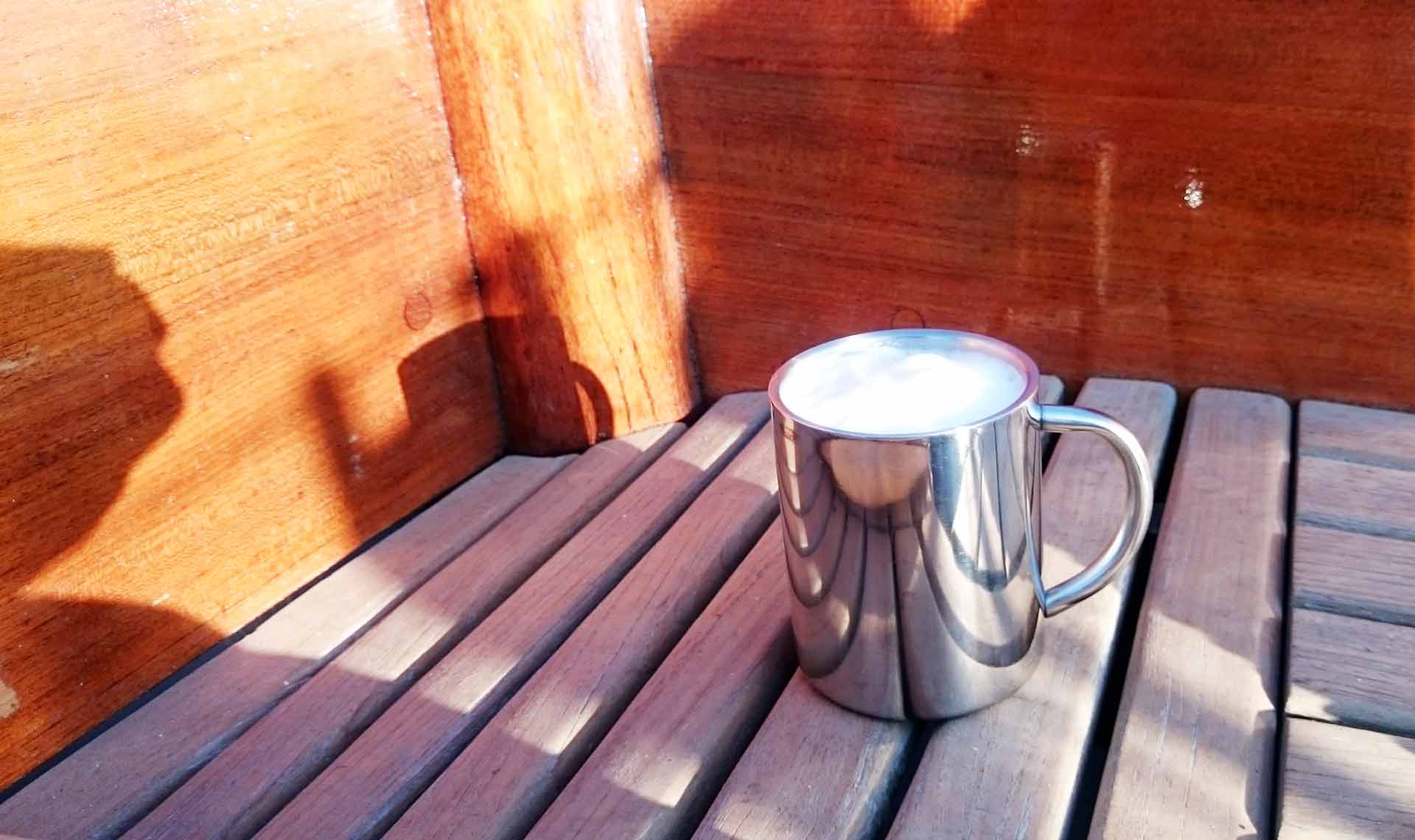
The two don´t have any plans right now. “We want to replenish our financial situation, work hard for some time and safe the money for the big trip.” In the meantime the two want to sail the North Sea and the Baltic, see the Danish coast and get familiar with their new old ship – SY ZIRKON, the 50 year old brand new Breeon-Sloop by Frans Maas.
Hanno and Nina like to thank especially Heinz: Without him the whole project wouldn´t have been possible. Peter for being so tireless at working at hard at every single item of the refit-program producing progress and good mood in the team. They both like to thank Manuel and Bruno who have been working their ways through the heaviest, dirtiest and most tiring of all the jobs – demanding nothing more than beer and steaks (and for still being their friends anyway). Thanks to all friends and family-members who are not too bored listening to their never ending tech-talk, who have supported us in the past project and giving us power for the coming.
And a big thank to you, Hanno & Nina for having shared your insights and story of refitting a classic sailing yacht with me and my dear reader. You may browse their website to follow the trail of SY ZIRKON.
